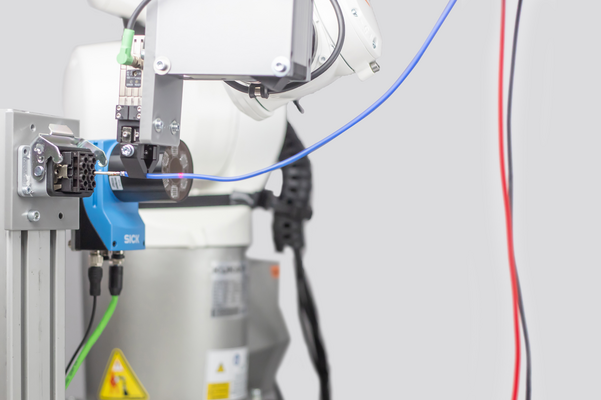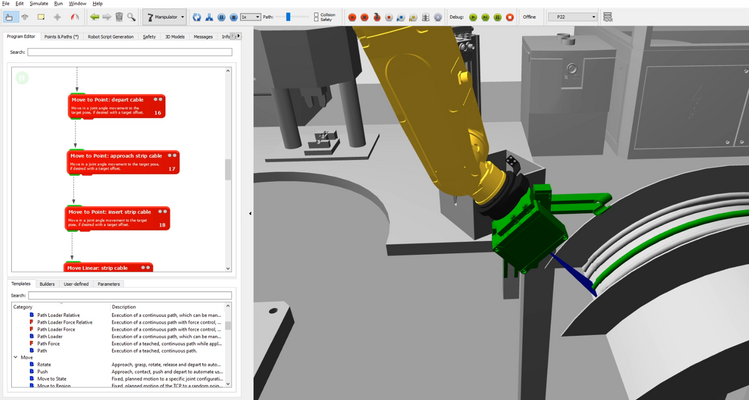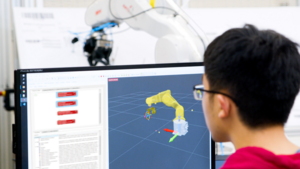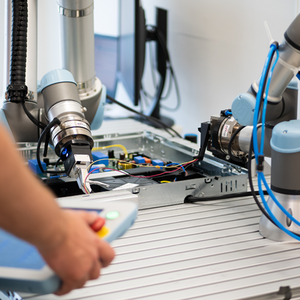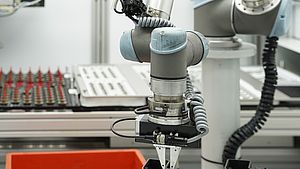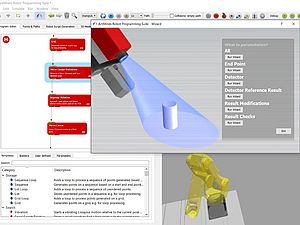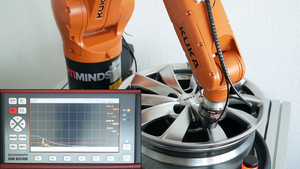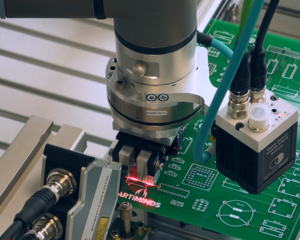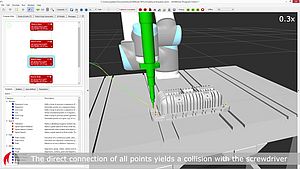The pressure to automate and digitize manufacturing processes is increasing significantly in the automotive sector. High quality requirements, a shortage of skilled workers or the desire to reshore production are three of the reasons. At the same time, cable-processing tasks such as the handling of cables during assembly or the production of small cable harnesses are still a classic case of manual work in many places. Robot-assisted solutions could often reduce this significantly.
Increasing flexibility by using robots
The quantities produced in the automotive industry usually change over time. In most cases, the quantities required by the market are smaller at the beginning, then gradually increase and, when demand is saturated, decrease again. Conventional production facilities are optimized for a specific task, are designed for peak times, and are therefore not ideally utilized during parts of their life span. If the product is no longer manufactured, the machine is no longer needed.
Production with flexible robot cells, which contain a high proportion of standard components, is more sustainable. These can be individually adapted to the respective technical requirements and product characteristics. The number of robot cells used can scale production quantities. This applies to the processing of limb parts. To compensate for the tolerances that prevail with flexible parts, the robots are equipped with flexibly configurable sensors such as laser scanners, force-torque sensors or smart cameras. Once the robot has specifically grasped the end of the cable, wire, or tube, it can flexibly perform various production steps, such as fitting connectors, loading machines for crimping or welding, attaching components to the wire and much more. For a robot to be able to grip flexible parts reliably, a number of requirements have to be met. ArtiMinds has developed a laser scanner approach for parts location in combination with their ArtiMinds RPS programming software. Rainer Jäkel, ArtiMinds-CTO, explains that there are three main approaches for feeding, for instance in cable assembly or wire harness production, depending on production environment and quantities, length and weight of the parts:
Cut to size directly on site
The more defined a cable or tube is fed to a robot, the easier it is for the robot to grip it. If the material is available on a reel or drum, for example, the gripping point is already sufficiently known. Tolerances arise due to the gripping process itself and properties of the material, such as twist. Once the robot has grasped the cable securely, it is easy to carry out further processing steps. "Of course, this requires vision tools that precisely measure the end of the gripped wire depending on the next processing step, so that the software can determine in which direction the wire sticks out from the gripper or at what angle it should be inserted into another part, for example," adds Jäkel. Once the cable has been grasped in a defined way, there are many things the robot can do with it. Although the robot does not reach the speed of a classic cutting machine, the ability to integrate additional process steps and thus save time throughout the entire handling process compensates for this in no time.
Using hanging racks
For longer cables, the use of suspension racks can be useful. These cables are often not only long, but also thick and therefore heavy, for example in the high-voltage range. The robot PAGE 11 missing.


